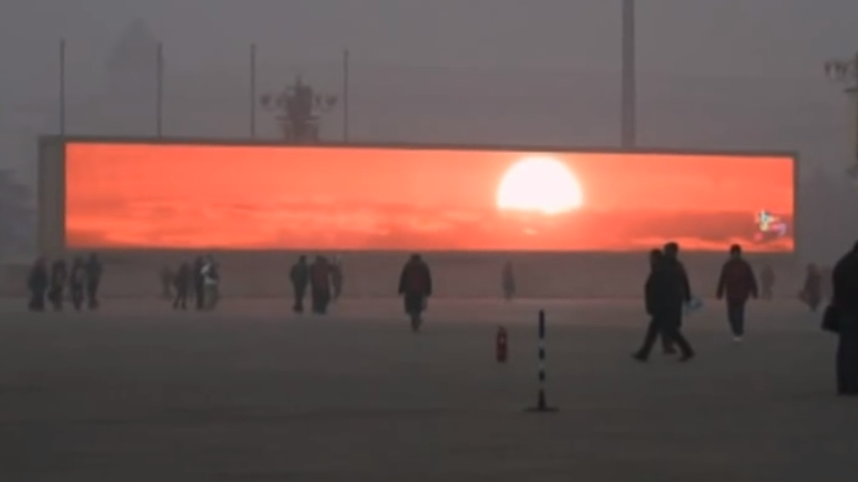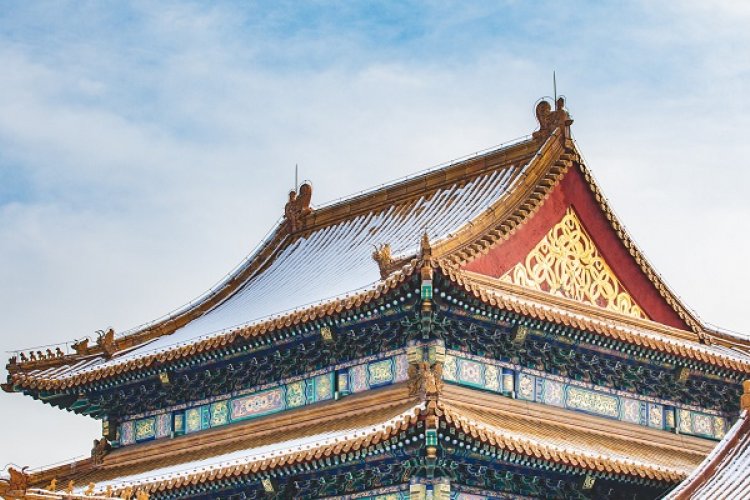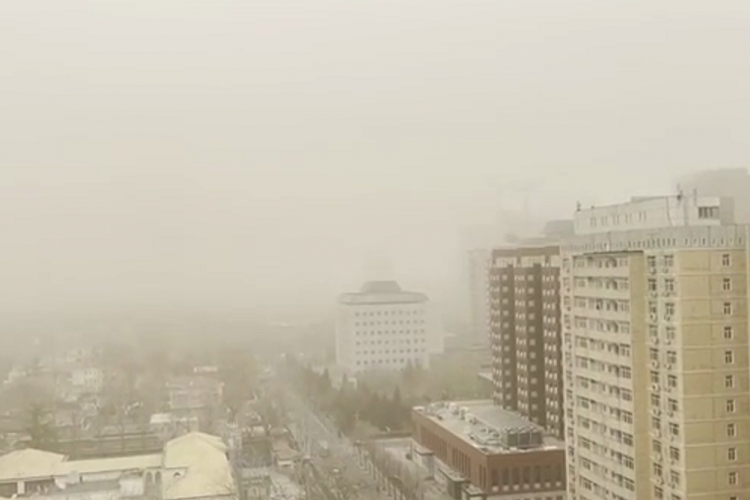Years of Breathing Dangerously: A Beijing Air Pollution Timeline
Whether it's strapping on an air mask, obsessing over AQI updates, or installing state-of-the-art purifiers, oppressive smog has enveloped Beijingers' lives in numerous ways. But it wasn't always like this. Foreigners once thought of bicycles and blue skies at the mentioning of Beijing, as opposed to the hazy horizons that now characterize our city. Below, we list some of the most significant dates in Beijing's smog saga, from the 2008 Olympics and the height of the "Airpocalypse," to the recent jump in blue-sky days that indicate a cleaner, fresher future.
1973
The first Australian embassy to China opens in "Peking." Shelley Warner, a junior diplomat, snaps a photo of "the blue sky over the quiet streets," and, 40 years later, submits that image to the Australian Broadcasting Corporation, telling the news outlet: "Today in Beijing, the sky is rarely blue, the bicycles have all but gone."
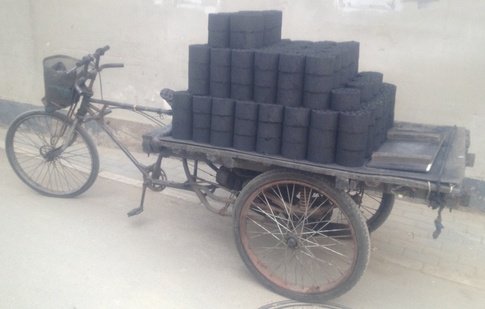
The mid-1990s
At the time, a Chinese mayor is quoted as saying: “In the 1970s we emphasized ‘farmland development’ and in the 1980s we placed our priority on ‘factory development’. Now in the 1990s we have made great advances in ‘city development.’” Copious amounts of coal were burned to keep those growing totals of city dwellers warm.
2005
China's CO2 emissions growth rate leaps to 10.6 percent since 2000, according to Washington State University, which added: "The amount of CO2 emission doubled in just a range of 5 years, as compared to when it took 20 years for it to rise to 5.5 percent between the years of 1971-90."
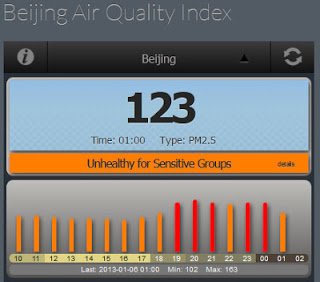
June, 2008
The US Embassy to Beijing begins Tweeting AQI levels at the handle @BeijingAir. The findings are gathered by an air quality monitor that was recently outfitted on the embassy's roof. It was the first time that data about hazardous PM2.5's became available to the public, which lead to a harsh backlash. According to Wired: "Beijing residents, dissatisfied with the crudeness of China’s air quality monitoring efforts, put pressure on Chinese officials to acknowledge the scale of the problem and start taking proactive measures to tackle it." In 2010 the embassy Tweets that air quality levels have become "Crazy Bad," prompting the Chinese government pressure American diplomats to dismantle their AQI monitor. They refuse, and their air quality readings quickly become the standard followed by the vast majority of Beijingers.
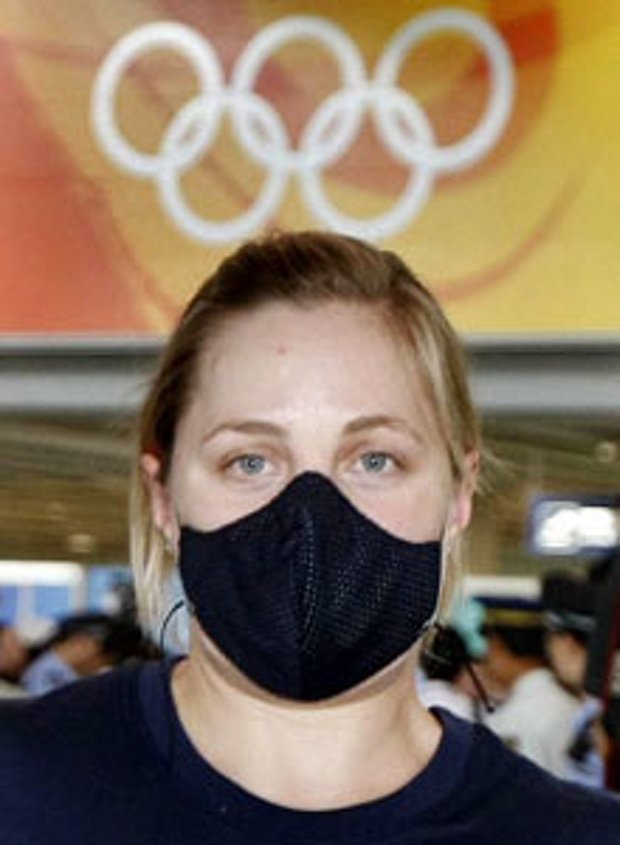
July, 2008
Despite months of drastic attempts to shut down factories and curb other sources of pollution, Beijing's pollution persists at embarrassing levels just a week before the Summer Olympic Games. Officials announce an emergency anti-smog plan, featuring a complete ban on construction, further driving restrictions and factory closures. Despite those efforts, the 2008 Beijing Olympics are still declared "the most polluted games ever."
November 2010
The US Embassy's @beijingair Twitter feed tweets Beijing's air quality as "Crazy Bad," prompting bemusement in the international press and a new round of notoriety for the capital's declining environment.
November 2011
State media quotes an overly optimistic expert who says China’s “foggy” grey skies are often mistaken for smog. Those outlets attempt to calm the uneasy masses with lines like: “Foggy weather is closely associated with air pollution, but the occurrence of heavy fogs does not necessarily mean a decline in air quality.”
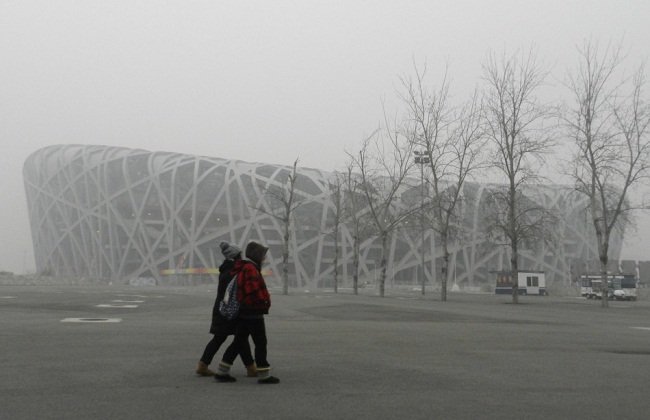
January 1, 2013
The Chinese government begins publishing PM2.5 levels of 74 cities in real time. Quartz says "That made the worsening pollution quantifiable – and undeniable." In the coming weeks, Beijing's AQI tops out at 993, which experts decry as "unimaginable levels," and 7,000 patients with respiratory issues flood Beijing Children's hospital per day. Before long, social media expert Angela Hsu tells The Guardian that healthy breathing has become a mainstream concern in China, with the term "PM2.5" garnering 3 million mentions on Weibo that month, compared to only 200 mentions in 2011.
July 12, 2013
A study finds that the life expectancy of northern Chinese residents is a staggering 5.5 years shorter than that of their southern counterparts. Profuse coal burning is listed as the primary culprit behind shortened life expectancy. The Ministry of Environmental Protection dismisses the findings as “unconvincing."
July 24, 2013
The PRC announces it will invest RMB 1.7 trillion (USD 277 million) to combat air pollution over the next half decade. Zhao Hualin, a senior official at the Ministry of Environmental Protection, indicates that the state’s primary concern lies as much with civil unrest as public health, telling reporters: ”The thick smog and haze that covered large areas of the country in January has focused public attention on this issue.”
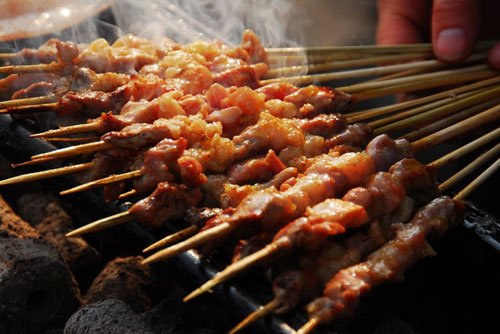
November 2013
More than 500 illegal chuan'r barbecue stands are shuttered by police, and RMB 5,000 fines are imposed, as part of a government clean air initiative. Public skepticism runs high, and the move is cynically dubbed "'blame pollution on everything except cars or coal' campaign” by one popular news outlet.
March, 2014
The US embassy in Beijing releases alarming findings based on its AQI data. In short: Beijing had 1,812 "unhealthy" level air days between 2008 and 2014, and only "two days in which levels did not exceed 'good.'"
January 28, 2015
Mayor Wang Anshun declares: “At the present time ... Beijing is not a livable city." His frankness appears to be prompted by a recent announcement that tourism in the capital has dropped by 10 percent because of pollution levels and economic decline.
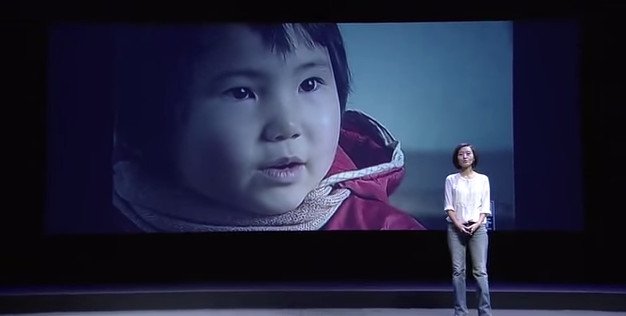
March 7, 2015
CCTV reporter Chai Jing’s groundbreaking pollution themed documentary, Under the Dome is pulled from Chinese video sites. In the previous week, the doc had garnered hundreds of millions of views and was hailed as China’s answer to An Inconvenient Truth – the Oscar winning 2006 American environmentalist documentary— thanks to Chai’s frank coverage of China’s air quality and its moving interviews with those affected.
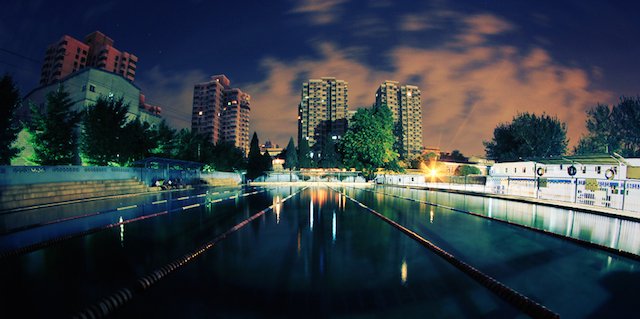
May 23, 2015
The Beijinger reports that PM2.5 levels have dropped by 19 percent this year, and that there was a total of 57 clean air days in the first quarter, compared to 49 from the same period a year before. Vice administrator of Beijing Environmental Protection Bureau Fang Li says coal power plant closures, boosted emission controls and favorable weather patterns all lead to the improved conditions. Writer Patrick Li shows cautious optimism by writing: "Most of us remember Beijing's Airpocalypse; could we be on the edge of a big change that will require us to coin a new phrase – perhaps the Airenaissance?"
July 15, 2015
Alarming pollution levels prompt the government to enact greater restrictions on Beijing’s drivers. The same “odd-even” licence plate limits used during high profile events like November 2014's Asia Pacific Economic Cooperation (APEC) and the 2008 Olympics on days when pollution reaches especially hazardous orange and red levels.
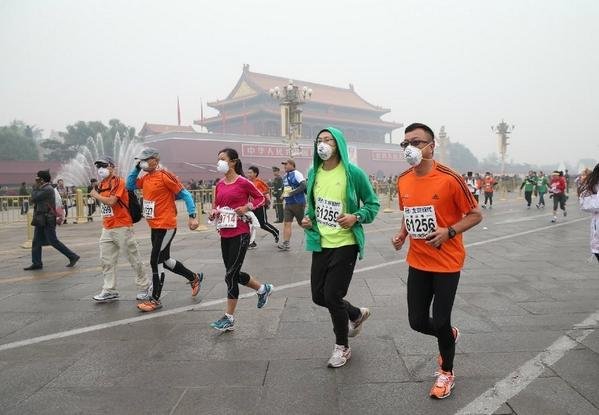
September 2015
Heavy smog does not deter runners from partaking in the Beijing marathon, leading to tragic results: six runners and a race official suffer heart attacks. The AQI reached a level of 175 and several runners wore masks during their efforts to cross the finish line.
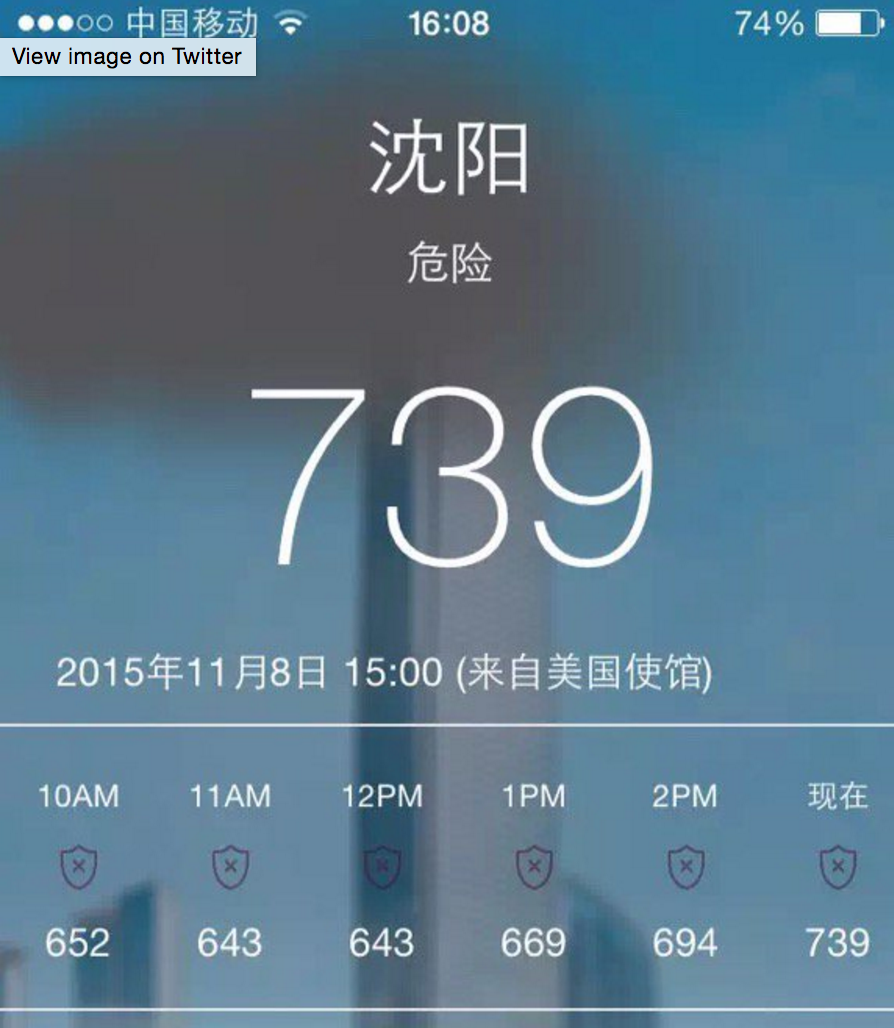
November 2015
China's northeastern provinces are blanketed by insane amounts of smog, reportedly at 56 times the level of the World Health Organization's standards for acceptable air quality. Meanwhile Beijing, which lies just to the southwest of this region, feels the fallout with a string of heavily polluted days as its struggles with smog continue.
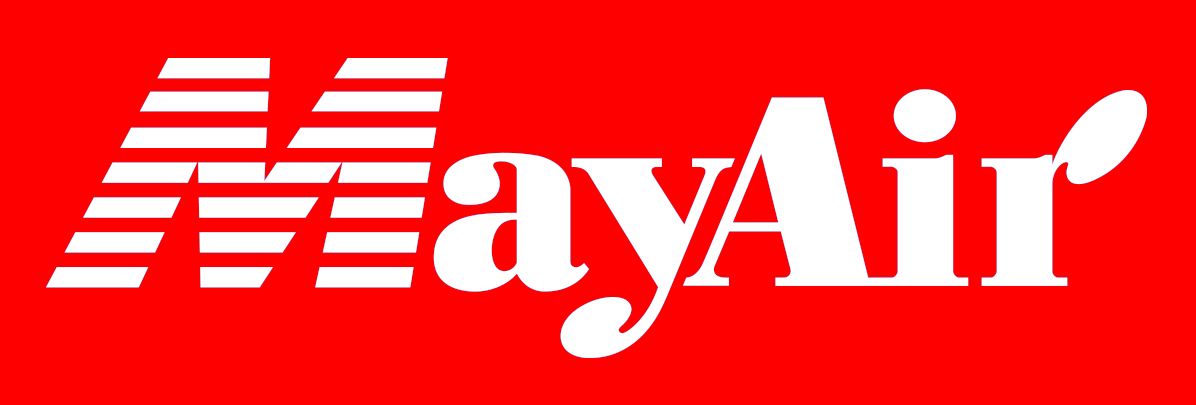
This post is sponsored by MayAir. Find out more about by visiting www.mayair.com.cn.
Photo: Uni You

